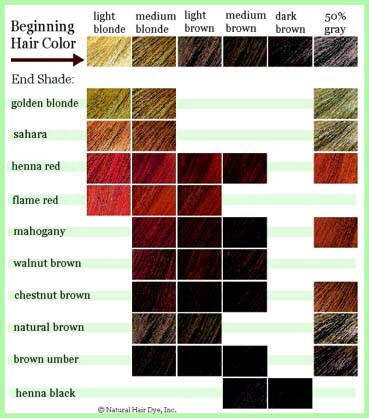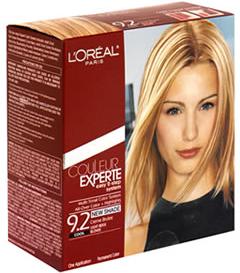Background Information
L’ Oreal is the world’s leading beauty company with 25 global brands in over 130 countries that manufactures 4.7 billion units annually. Its brands include: L’Oreal Paris L’Oreal Professional Paris Softsheen-Carson Lancome Paris Diesel Giorgio Armani Perfumes Viktor & Rolf Vichy Laboratories La Roche-Posay Inneov Cosmetics The Body ShopTHE HISTORY of L'OREAL and HAIR COLOR In 1907, a French pharmacist , Eugene Schueller, devised a formula for creating the first (or at least first recognized) permanent hair colors using chemical ingredients. Working from his Paris home, Schueller adapted the principles and chemical ingredients utilized in the production of fabric dyes for use on human hair. Schueller’s first efforts resulted in a limited range of dark, golden and red shades on natural bases, but the effect on the hair industry was revolutionary. This small home pharmacy became the center of authority on hair cosmetics. From Schueller’s work, the entire hair color industry was born. Eugene Schueller called his permanent hair color manufacturing company L’Oreal.
When hair color was first developed, it was used by women to portray women in power i.e. Queen Elizabeth's red hair, Madonna's blonde hair, etc. During the Renaissance, women favored golden hues, which were considered angelic. As hair color gained popularity, it was used mostly by actresses. Everyday women didn't receive acceptance for its usage by society until the middle of the 20th century. As the 20th century continued, Hollywood's blonde bombshells put the angelic image to rest and created the blonde "bad girl" who is synonymous with sexy, creating the cliche, "Blondes have more fun."
Manufacturing Process
To find out how hair color is made, view the manufacturing process page. In the United States, consumers expect that the Food & Drug Administration (FDA) will protect them from dangerous beauty products. Unfortunately, the FDA is extremely limited in what it can do. The FDA does not approve cosmetics before they hit the market, it does not have the power to issue recalls on dangerous products (only the manufacturers can), the FDA does not test cosmetics, and manufacturers are not even required to register with the FDA. As a result, only 10 of 1,132 chemicals that are banned in the European Union are banned in the United States. The FDA allows hazardous chemicals to remain on ingredient lists and in products by labeling them as "fragrance." Manufacturers tend to test products for short-term safety, leaving long-term effects unknown. The FDA gets its information on products from the Personal Care Products Council, which established and funds the Cosmetic Ingredient Review (CIR). Since its establishment, the CIR has only deemed 9 ingredients unsafe--and manufacturers do not even have to abide by the CIR's recommendations. The result? Dangerous chemicals in our cosmetics, especially in our hair color. To view a full list of chemicals and their effects, visit the dangerous chemicals page. Laborers and Employees There are currently 63,358 employees at L’Oreal which range from all different backrounds.
L'Oreal is one of the 3rd most popular employers according to Universum Institute. Currently around 60% of the employees are women. Out of the Board of Directors there are 11 men and 2 women.(L'Oreal There are numerous profiteers of the L’Oreal company.In 2007 the company earned 17,063 million in sales.
There are a total of four different Shareholders currently. One being the Bettencourt family which first started L’Oreal. They currently own 30% of the stock. Nestle company is also a big shareholder, owning 28.9% of stock. The Treasury shares owns about 3.7% of stock. Then left over 37.4% of stock is publicly traded. Marketing In 2007, L’Oreal spent 5,127 million Euros (about 6.5 million dollars) on promotion and advertising alone. Hair color accounted for 15.7% of all their business that year. L’ Oreal hair color is primarily marketed towards adult women. L’Oreal advertisements include print ads, television commercials, billboards, movie theatre campaigns, online campaigns, college sampling, and concert promotions. As recently as 2006, L’ Oreal was the world’s 4th biggest advertiser. In the United States, L’ Oreal is famous for its “Because You’re Worth It” campaign, which feaures some of America’s biggest celebrities as spokesmodels: Beyonce Knowles, Scarlett Johansson, Eva Longoria, Andie McDowell, Heather Locklear, Jessica Alba, and Penelope Cruz. L’Oreal has also partnered with the hit TV show "Project Runway" as their exclusive cosmetics sponsor. While L’ Oreal asserts that “diversity is a priority” for its company, L’ Oreal’s advertising tells a different story. In an August ’08 print ad for Feria haircolor, pop singer Beyonce looks strangely light-skinned. Both the company and the singer deny any photoshopping of the ad. The Advertising Standards Authority (ASA), an independent regulator for advertisements in the UK, has also condemned L’Oreal for advertisements (mascara and lipstick among others) that mislead costumers. L’Oreal has disagreed with the ASA, but has agreed to comply with their recommendations in the future. Finally, in 2006, a class-action lawsuit was filed against the company for falsely promoting their Garnier shampoos and conditioners.
Hair Color and Gender Gender is involved in all aspects of hair color, from its laborers to its consumers. L'Oreal hair color is made by women and for women. The majority of workers are female (62.2%) and 56% of managerial staff are women, but women only constitute 35% of management committee members. At least in regards to L'Oreal, it seems that the old adage "the higher, the fewer" is true. Unfortunately, L' Oreal apparently only hires women who are white, young, and pretty. In 2005, L' Oreal was sued by Elysa Yanowitz for unlawful retaliation after Yanowitz (a regional sales manager for L'Oreal) refused to fire a woman that her male supervisor said was not "hot" enough to work for the company. Yanowitz claimed this constituted sex discrimination and refused to fire the employee. Because of her failure to comply, Yanowitz was subjected to increased scrutiny and hostile treatment. She sued and the California Supreme Court ruled in her favor. In 2007, Garnier (a company owned by L'Oreal) and Adecco (a French employment agency) were fined $30, 000 Euros (about $38,148) for carrying out a racist recruitment campaign in France in the year 2000. A Paris court found that Adecco had conspired with Garnier to find only young, white women to be employees of the company. The court found both parties guilty of racism, but L'Oreal maintains that it is not racist and plans to appeal. Because women are the majority of hair color consumers, they are also the most at risk for any complications occurring with its use. In 2008, Jerome Chavallier (L'Oreal's former regulatory affairs director) sued the company for selling products overseas with carcinogenic chemicals and falsely advertising them as 100% vegan. Chavallier claims he was fired after complaining to his supervisors about the illegal activities. Although the case has not yet been decided, if the allegations are true, it could mean dangerous circumstances for any women who purchased L'Oreal hair color overseas. Finally, considering that beauty is a billion-dollar industry and L'Oreal is the biggest (i.e., most profitable company), they must be doing something right. Unfortunately, L'Oreal preys on womens' insecurities about appearance to sell their products. Its advertising suggests that women should use hair color because it makes them more confident and/or glamorous. They also suggest that older women should color their hair to look younger and thus feel better about themselves. The bottom line is that women are not good enough the way they are, but they can be if they buy the products. Hair color is especially lucrative because consumers must keep using the product (because it fades) and therefore must keep purchasing it. Although L'Oreal does not have a hair color line specifically targeted to men, they suggest that men color their hair as well--to appear younger, more attractive, and better candidates for the job market. Men's hair color is also a fast-growing industry, preying upon men's insecurites about their appearance (just as with women). On the bright side, L'Oreal sponsors a "Women in Science" program that honors and rewards women working in the field of science. The program hopes to raise awareness about womens' contributions to science and identify female researchers who can be role models for younger generations. L'Oreal also sponsors a "Women of Worth" program that seeks to honor and award women who are making a difference in their community. L'Oreal makes a $5,000 donation to the honoree's cause as well as an additional $5,000 donation to the Ovarian Cancer Research Fund. In addition, one woman will be named the national Woman of Worth and L'Oreal Paris will make a $25,000 contribution in her name to her cause. L'Oreal also sponsors a Color of Hope program that helps to raise money and awareness for the fight against ovarian cancer, which is the 5th leading cause of cancer death in U.S. women.
| 10 Things Every Consumer Should Know 1. Don't leave the color on your head any longer than necessary. (FDA) 2. Rinse your scalp thoroughly with water after use. (FDA) 3. Wear gloves when applying hair color. (FDA) 4. Carefully follow the directions on the hair color package. (FDA) 5. Never mix different hair color products, because you can induce potentially harmful reactions. (FDA) 6. There are currently 22 hair color chemicals banned in Europe that are causing bladder cancer but are still being used in the United States. (List of Chemicals) 7. L'Oreal conducts animal testing. They claim that new chemicals must first be tested on animals. (Sustainable Development Report) 8. If you are pregnant, be sure to talk to your doctor before coloring your hair. Some studies suggest that hair color can be toxic to fetuses. Follow these tips. 9. There are alternatives to coloring your hair with chemicals. Henna is a natural way to color your hair and costs the same amount of money. 10. Never use hair color with phthalates or coal tar derivatives. Also, try to avoid using hair color with P-Phenylenediamine. Learn why these chemicals are so dangerous on the dangerous chemicals page.
The Word on the Street... Hair Stylist Interview with Jessica VanHovelen from Hair Vibrations in Watseka, IL. Overall, she has had a positive experience with using L' Oreal products, although she did have one complaint. (The Full Interview) Consumers Interview done with Asian, African American, and Caucasian women. All had different opinions about L'Oreal products. The Asian woman, "Haleigh" (22), thought the information was very eye opening gender issues and L'Oreal founder, but she would still use the product. The African American woman, "Kiara" (21), was also very surprised by the information and surprised about the lack of African American models not used. She would not use L'Oreal. The Caucasian woman "Jen" (21), had no problem with looking at the information and would still keep using the hair products. (The Full Interview) Seller We spoke to a sales associate at Sally’s Beauty Supply. “Sara” told us that she has seen a lot of hair disasters before but their business keeps going. No matter what the hair dye keeps them in business. (The Full Interview) What You Can Do
Sources
|



